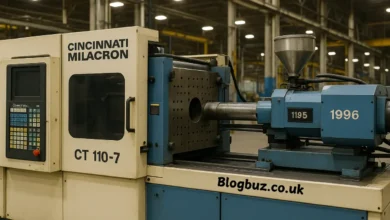Solving the Biggest Airport Taxi Challenges with Automation

To customers or normal people, airport taxi services may look smooth from the outside, but the reality is different.
Flight delays, strict pickup windows, heavy traffic, and high passenger expectations make airport taxi operations complex.
And it can get even trickier, if you’re still managing everything manually.
When managing manually, these challenges don’t just slow you down; they can stop you.
Stop you from leaving up to your customers’ expectations, getting a competitive edge and growth entirely.
This is where automation comes in.
With the right technology for managing airport transfer, airport taxi businesses can not only survive but also dominate, grow rapidly, and deliver 10 times better experiences.
Let’s break it all down.
Why airport taxi operations are so complex
Airport pickups are different from city rides as everything runs on tight timelines. And one delay can lead to unwanted and frustrating situations for both your customers and your drivers.
Here’s why the pressure is higher:
- Flight schedules change often: You can’t rely on the original ETA, always.
- High passenger volume: During peak hours, things can get messy fast, making accuracy and precision a must.
- Short pickup windows: Drivers can’t wait forever at terminals.
- Strict airport rules: Delays or missed pickups may get your drivers fined.
- Coordination is tough: Drivers and passengers often can’t find each other.
Manual systems can’t keep up. You need speed, accuracy, and smart coordination to deliver the best service and keep customers delighted.
Top problems airport taxi services face
Let’s look at what really slows down airport taxi operations.
1. Missed pickups
Passengers arrive but can’t find their ride. Sometimes the driver arrives too early or too late, or sometimes they get stuck in the wrong terminal. Either way, it’s a bad experience and not just for the passenger but for the drivers as well.
2. Manual scheduling errors
Trying to track flights, assign drivers, and manage changes manually is exhausting. Mistakes are more likely to happen, especially when it’s a busy day.
3. Driver & passenger confusion
At large airports, it’s easy to get lost. Without real-time updates and communication, drivers and passengers might end up wasting time looking for each other.
4. Last-minute changes
When compared to any other taxi service, airport transfer services have a high chance of having last-minute changes. And when changes come unexpectedly, it’s tough to manage them if your system isn’t agile.
The real cost behind these challenges
These problems don’t just cause inconvenience; they damage your business in the most brutal manner.
- Poor ratings and reviews: One bad pickup can turn into a negative online review. And one negative review can impact the choice of hundreds of other passengers.
- Lost customers: Frustrated passengers won’t book again and might spread bad word of mouth as well, hampering your business’s reputation.
- Loss of competitive edge: Airports are competitive zones. And if you’re not reliable, your passengers won’t even blink before shifting to your competitors.
- Limited growth: Without automation, scaling becomes difficult. Every extra booking adds stress instead of profit, that is not a great sign for any business.
How automation fixes these problems
Using on-demand airport taxi booking software helps remove chaos from your daily operations. Here’s how automation makes the difference:
1. Real-time dispatch based on flight updates
The system tracks flight statuses and adjusts driver schedules automatically. If a flight is delayed, the pickup time updates instantly.
2. Driver & passenger app for improved coordination
Drivers get in-app navigation to the correct terminal. Passengers get live driver location and estimated arrival time. They can even chat directly and eliminate the chances of missed connections.
3. Smart scheduling for lesser errors
With an airport transfer booking software, bookings are automatically assigned to available drivers based on location, ETA, and vehicle type. You avoid overlaps, idle time, and missed rides.
4. Instant reassignments for on-time pickups
If a driver cancels or gets delayed, the system finds and assigns a new driver in seconds. This keeps the passenger experience smooth.
5. Optimized fleet use for enhanced productivity
A cloud-based airport transfer software gives you full visibility. You can see which drivers are free, where the traffic is, and how the airport situation is evolving.
Benefits your business can’t ignore
Let’s talk about what happens once you start using automation:
- Happier passengers: Fast, smooth pickups mean better experiences. And that means better reviews and higher chances of repeat business.
- More bookings, less stress: Handle more airport transfers without hiring more staff. The system does the heavy lifting.
- Better driver efficiency: Drivers spend less time waiting and more time driving. That means more earnings and less burnout.
- Fewer mistakes: Automation reduces human error. Schedules, updates, and dispatches are handled smartly.
- Data that helps you grow: You get insights into ride patterns, peak hours, cancellations, and more. This helps you make smarter business decisions.
What to look for in a good airport taxi dispatch system
Not all systems are built the same. If you’re exploring software for chauffeur businesses or airport fleets, here’s what really matters:
i. Cloud-based access
You should be able to manage operations from anywhere. A cloud-based airport transfer software keeps everything synced in real-time.
ii. Flight tracking integration
Look for systems that automatically sync with flight status. This helps avoid missed pickups.
iii. Real-time driver tracking
Live maps and ETA tracking help both passengers and admins stay updated.
iv. Auto-dispatch and smart queuing
The system should assign drivers automatically based on availability, vehicle type, and proximity.
v. In-app chat and alerts
Communication should be quick and easy, without switching between platforms.
vi. Analytics and reporting
Understand your performance, revenue, demand spikes, and downtime with easy-to-read reports.
The future of airport taxi services is automated
Today’s airport travelers expect fast, reliable, and easy rides. Manual operations can’t deliver that.
If you want to meet passenger expectations, grow your fleet, and stay ahead of competitors, automation isn’t a choice; it is a must.
Using an on-demand airport taxi booking software not only simplifies your operations, but it also gives you the edge in a crowded market.
Conclusion
Running airport taxi operations is tough. But with the right tech, you can overcome every major challenge and run like a well-oiled machine.
By switching to a cloud-based airport transfer software, you set yourself up for long-term success. Your passengers stay happy. Your drivers stay productive. And your business grows.
In a high-stakes space like airport pickups, there’s no room for error. Smart automation keeps you ahead of the curve and your competitors.



